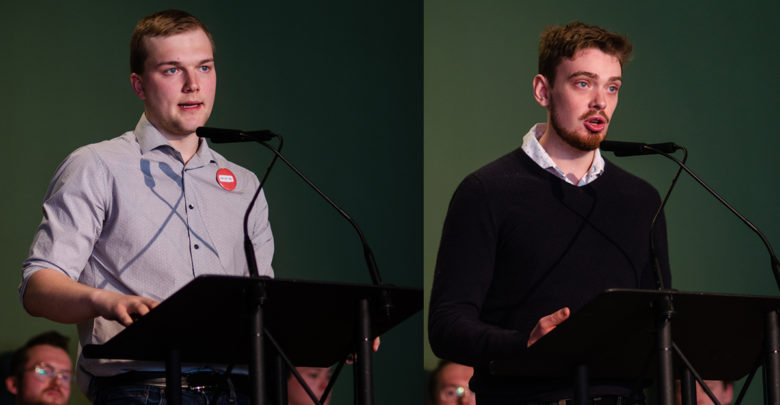We need a new kind of advocacy from vice-president (external) this year
 Helen Zhang
Helen ZhangOpinion: “Continuing to protest alongside allies and other students is something worth fighting for, but unless there is significant change in how the protests are done, the outcome may continue to remain the same.”
So far in the race for 2020 vice-president (external), candidates Robert Bilak and Rowan Ley have expressed their wishes for greater student pushback against the provincial government’s cuts to the university. Both candidates seem to agree that the SU cannot remain silent while students and the University of Alberta community suffer under these policies, and want students to take the lead in the movement against them.
For these candidates, the main issue seems to lie in garnering outside sympathy for University of Alberta students. However it’s a difficult task when students are a small minority, and not everyone sees student issues the way we do. As a solution, Bilak wants to work with groups such as Students Not Silent, as well as nurses and teachers who are also affected by current budget cuts. Bilak wants to show Albertans that these issues are bigger than just individual students, and will affect everyone in one capacity or another. Ley agreed with this idea, adding that he would also want to create a campaign for public engagement.
All of this, of course, was pitched in conjunction with student protests. Both candidates want to work with students and student groups to create meaningful change, though Ley was vocal about facilitating a grassroots movement that is more democratic, and allows different student representative groups to take the reigns. He argued that previous SU protests at the Alberta legislature are not enough, calling one-hour protests ineffective.
Both candidates are pro-protest, which is a good thing to see from a candidate for vice-president (external). Neither are coming from a platform of apathy, and nor should they, given that the university is under attack from a rise in tuition and massive cuts from the provincial government.
The problem is tangible ways of accomplishing this. While I admire the calls to action from the candidates, I find it hard to put faith in them, especially considering the SU didn’t organize a single protest this year.
Advocacy cannot be pushed to the wayside for another year, not when these provincial policies are going to hurt so many. The campaigns for the student body to ally ourselves with other Albertans affected by the cuts are refreshing. However, I’m left wondering how much more the Student’s Union will be able to do.
Having a grassroots, student-led movement is a good start, and having leaders from student representative groups present for these protests is also a way to increase participation. Given that the SU must remain nonpartisan, how much can be done other than protests at the legislature and public campaigns? At the second SUBStage forum today, the meaningfulness of the previous one-hour protest was called into question. Other than collaborating with student representative groups and having them take charge — which is what the SU should already be — how will the candidates ensure future protests are more effective?
Say the best case scenario is realized; teachers, nurses, and ordinary Albertans are sympathetic towards the student body and are willing to help. There’s an s student-led protest with informal and formal leaders at the helm, leading the march to the legislature. The protest is going to last more than an hour… so now what?
Continuing to protest alongside allies and other students is something worth fighting for, but unless there is significant change in how the protests are done, the outcome may continue to remain the same — what some would call meaningless.




